The Chromatic Comfort Zone: Transforming Spaces Through Banquette Seating Color
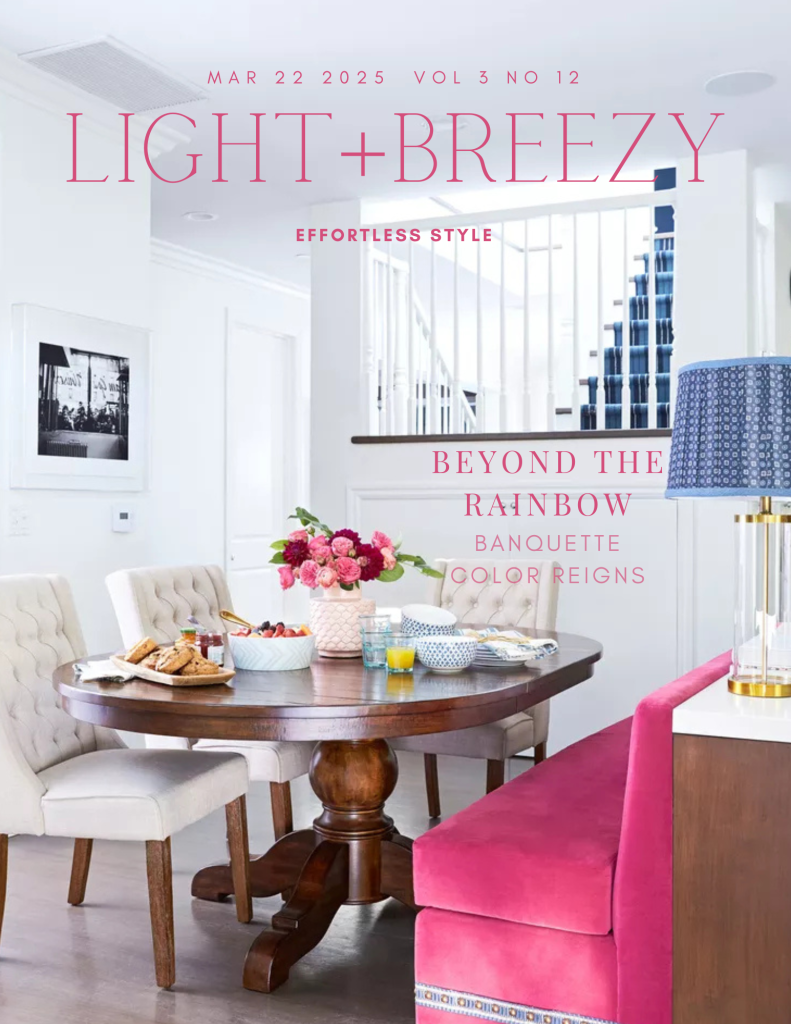
The humble banquette has evolved from restaurant mainstay to residential showstopper. These space-saving seating arrangements now grace kitchens, dining rooms, and even living spaces with their practical charm. But beyond their functional appeal lies an often overlooked superpower: the transformative impact of color.
The right color choice for your banquette seating can completely redefine a space. It’s not just about aesthetics—color influences our emotions, our appetite, and even our conversations.
The Emotional Palette: How Colors Set the Mood
Walking into a room with a vibrant red banquette delivers an entirely different experience than entering one with serene blue seating. This isn’t just subjective preference—it’s rooted in color psychology, the study of how different hues affect human behavior and feeling.
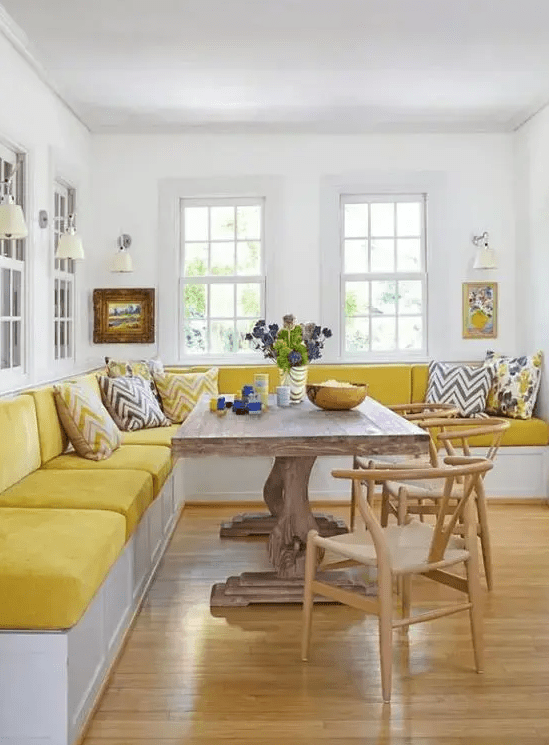
In the kitchen, where many homeowners install banquette seating to maximize space, colors take on particular significance. Warm tones like terracotta, burnt orange, and golden yellow can stimulate appetite and conversation—ideal for a family breakfast nook. These earthy hues also complement natural materials like wood and stone that often feature prominently in kitchen design.
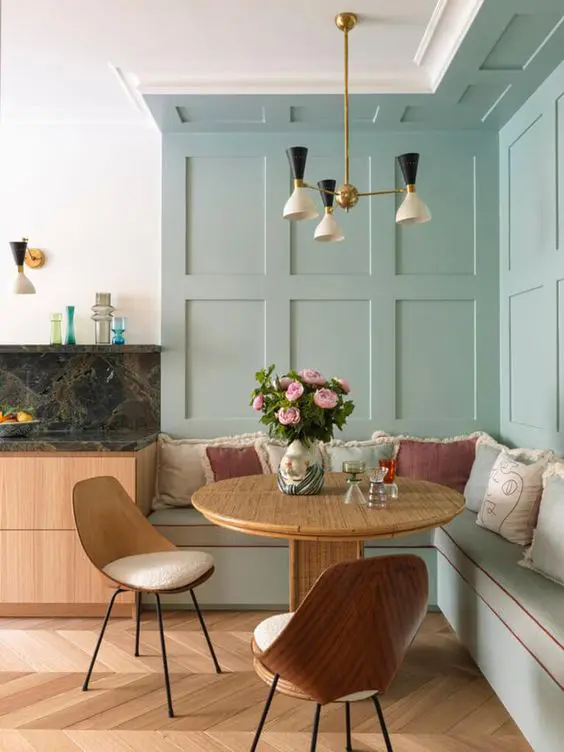
Conversely, cool blues and greens create a sense of calm and clarity. For families who want their kitchen banquette to double as a homework station or home office, these cooler tones help maintain focus. They’re particularly effective in small corner banquette arrangements where you want to create a peaceful retreat from the rest of the kitchen’s activity.
Small Spaces, Bold Choices
The conventional wisdom once suggested that small spaces demanded light colors to appear larger. Today’s designers are challenging this notion, particularly with banquettes.
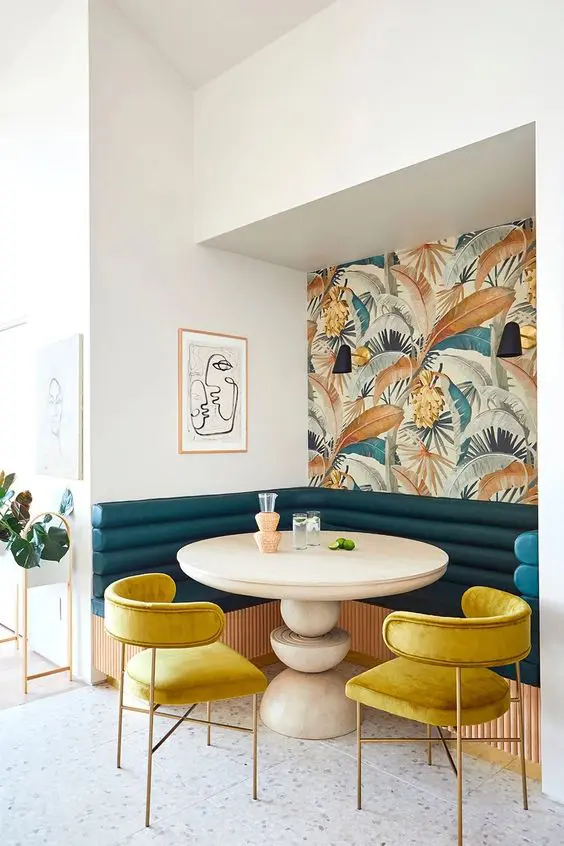
A small corner banquette in a deep, rich color can become the focal point of a room. Rather than trying to make the space disappear with white or beige, embrace its coziness with navy, forest green, or even aubergine.
This approach works particularly well with built-in banquettes, where the seating becomes an architectural element. A dramatic color choice turns a utilitarian feature into a deliberate design statement.
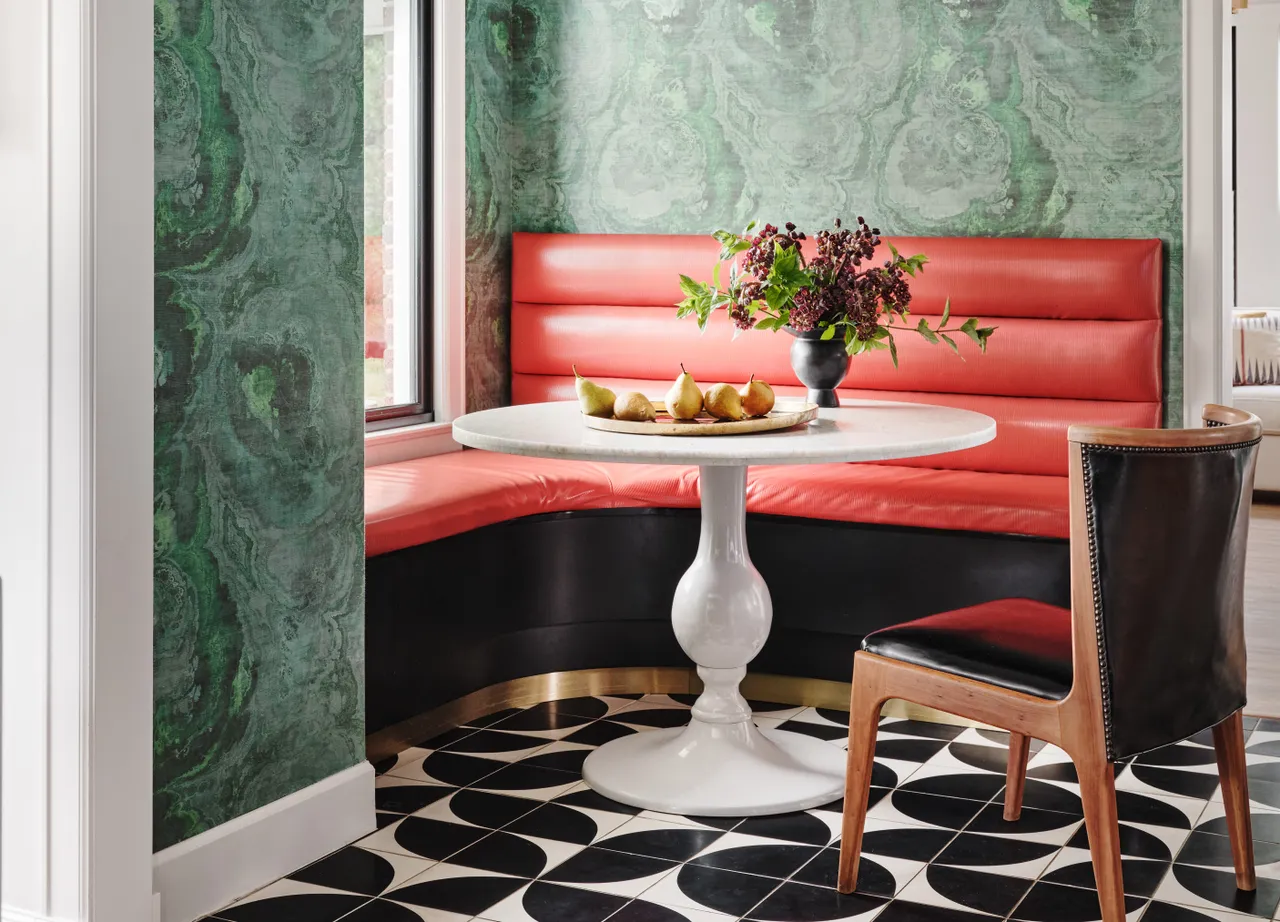
For those still concerned about spatial constraints, consider two-tone approaches: a darker, anchoring color for the base of the banquette with a lighter shade for the cushions and backrest. This creates depth without overwhelming the space.
Modern Profiles, Modern Palettes
The dining room has become ground zero for banquette experimentation, with modern banquette seating replacing traditional dining chairs on one or more sides of the table. Here, color selection often follows architectural lines.
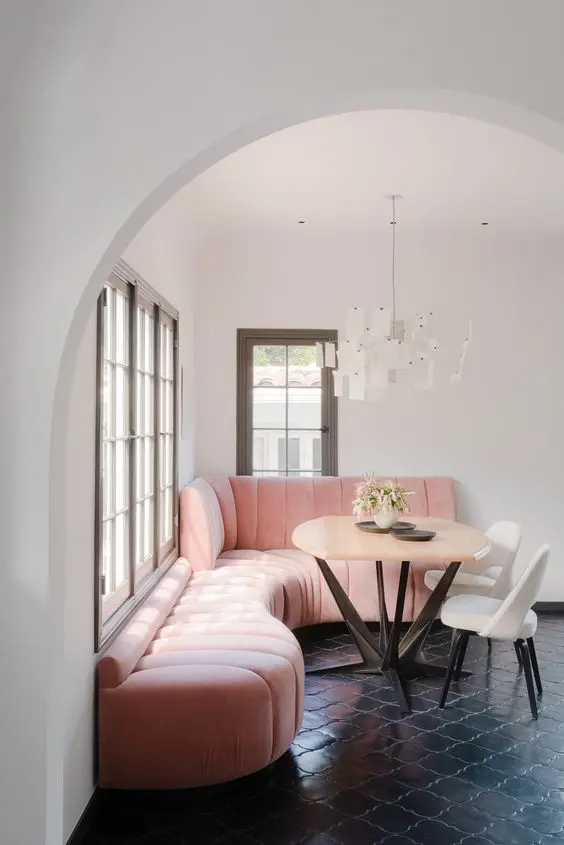
Curved banquette seating, with its soft, embracing form, pairs beautifully with equally soft color choices—dusty rose, sage green, or powder blue create a sense of flow and movement. The gentle curves of these pieces already invite relaxation; complementary colors enhance this effect.
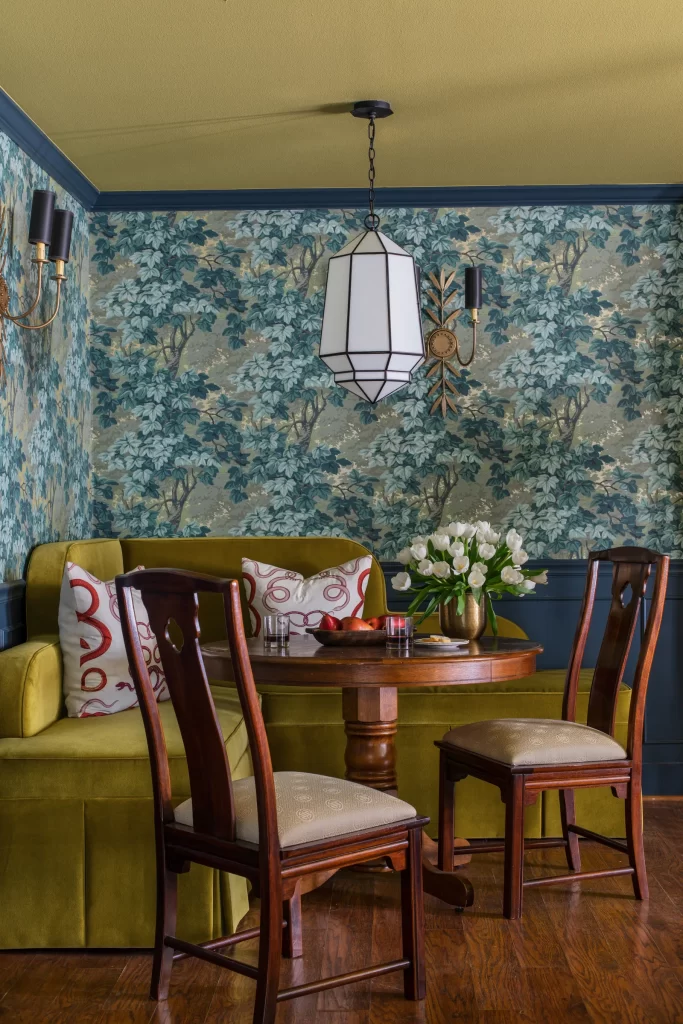
More angular, minimalist banquettes in dining spaces can handle stronger color statements. A geometric banquette in chartreuse or electric blue becomes functional sculpture. In minimalist spaces, these punctuations of color prevent the room from feeling cold or impersonal.
The New Neutrals
Not every homeowner wants a statement piece. For those seeking subtlety, neutrals have expanded far beyond beige and gray.
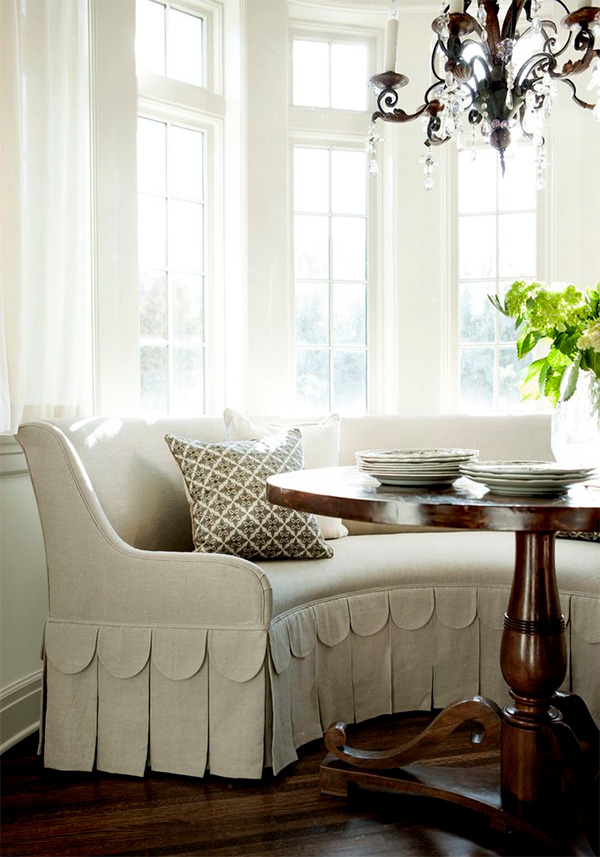
We’re seeing beautiful banquette ideas incorporating muted tones that change with the light. Taupe with pink undertones, greige with lavender hints, or sand with gold flecks—these complex neutrals have depth that flat whites never achieved.
These sophisticated non-colors work exceptionally well in living room banquette settings, where the seating might need to harmonize with existing furniture. They provide texture and interest without competing with other elements.
Material Matters
Color selection doesn’t happen in isolation—the fabric or material of your banquette significantly impacts how color is perceived.
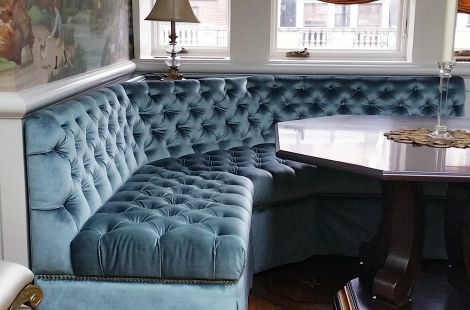
Velvet intensifies color, making even subtle shades appear richer and more luxurious. Leather and vinyl reflect light, giving colors a dimensional quality that changes throughout the day. Linen and cotton offer a more matte finish, where colors appear softer and more casual.
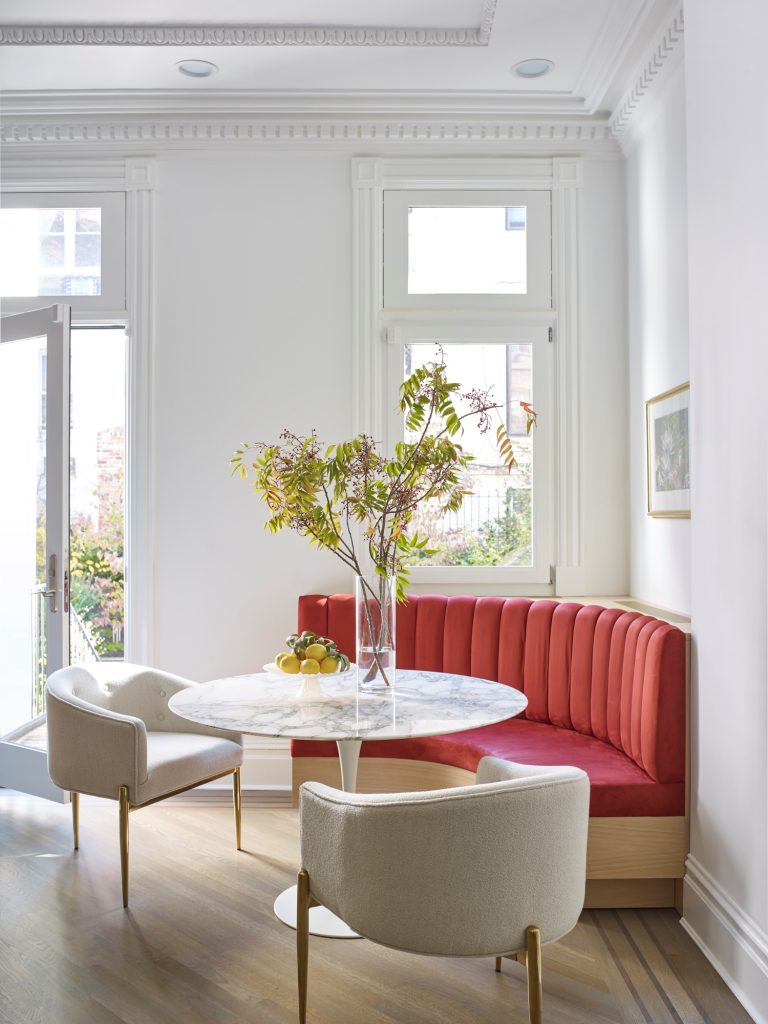
For kitchen banquette seating, where practicality matters, performance fabrics now come in virtually every shade imaginable. You don’t have to sacrifice your color vision for functionality. Today’s indoor-outdoor fabrics can handle spills while still delivering the perfect shade of coral or teal.
Lighting’s Critical Role
Even the perfect color choice can fall flat without appropriate lighting. Banquettes often occupy corners or window-adjacent positions where light conditions vary dramatically.
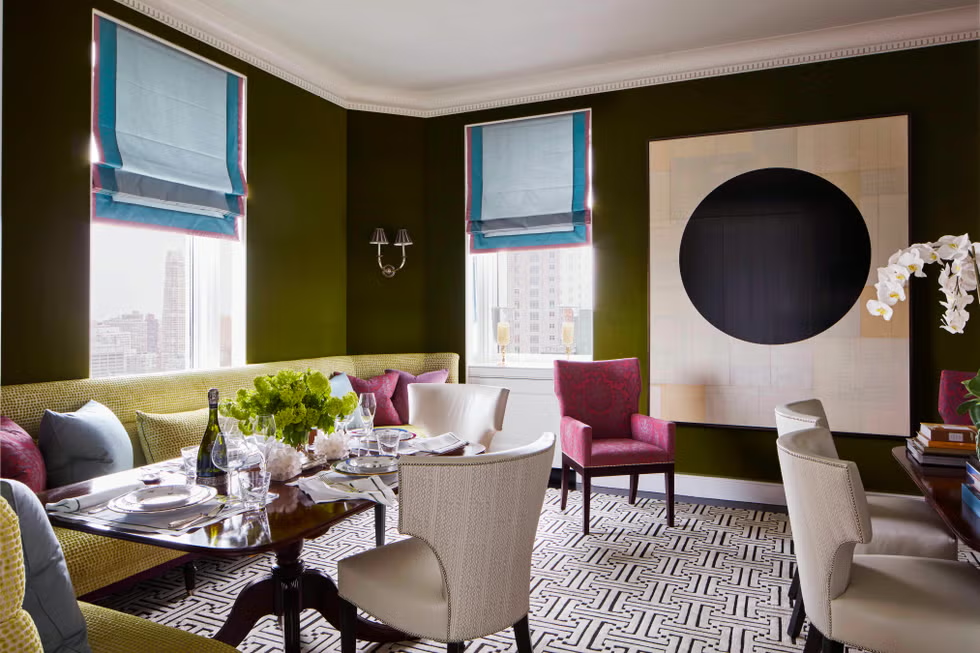
Always test your color under different lighting scenarios. A mustard yellow that looks energizing under morning sun might appear murky under evening artificial light.
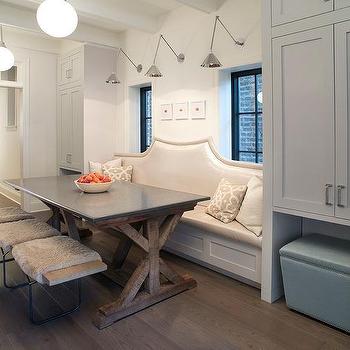
For built-in banquettes, consider incorporating lighting into the design—LED strips beneath floating banquettes or sconces above built-in seating can ensure your color choice shines regardless of natural light conditions.
Beyond the Rainbow: Finishing Touches
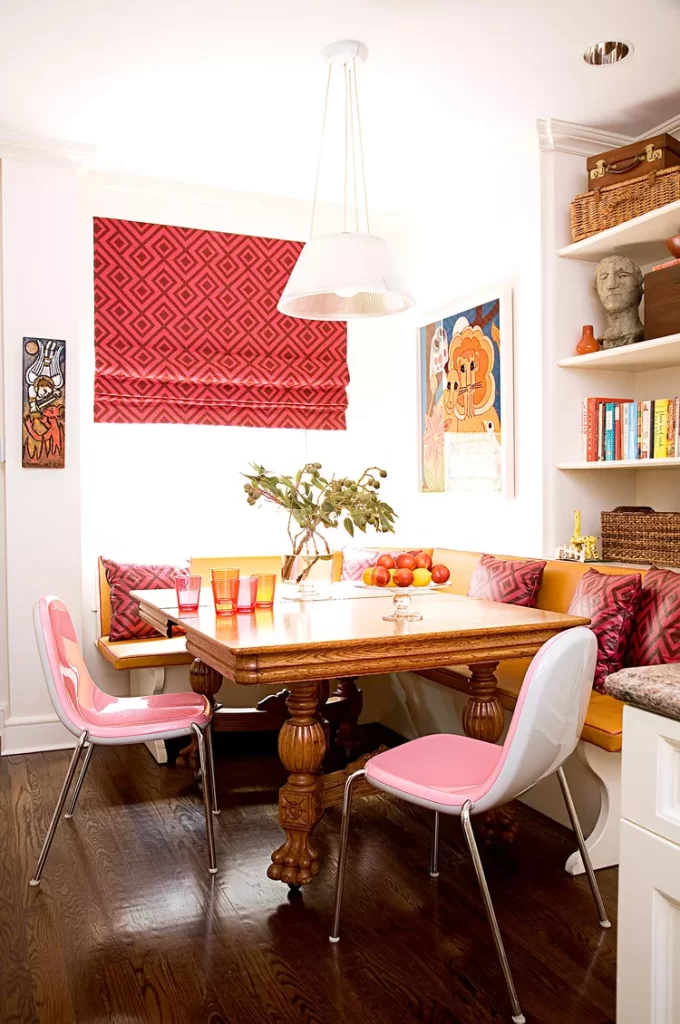
Once you’ve selected your perfect banquette color, complement it with thoughtful accessories. Pillows in contrasting or coordinating colors add depth and comfort. Table settings that pick up accent colors create cohesion. Even artwork positioned near the banquette can enhance and dialogue with your color selection.
A banquette is rarely just about the seating. It’s about creating an environment, and color is your most powerful tool in that creation.
Whether you’re drawn to the drama of jewel tones, the serenity of pastels, or the sophistication of new neutrals, your banquette color choice offers an opportunity to transform not just your space but also the experiences you’ll have within it. From morning coffee in a sunshine-yellow kitchen nook to elegant dinners alongside a midnight-blue curved masterpiece, the right color sets the stage for life’s moments, both ordinary and extraordinary.
Choose a color that makes you feel the way you want to feel in that space. In the end, that’s what truly transforms a house into a home.
